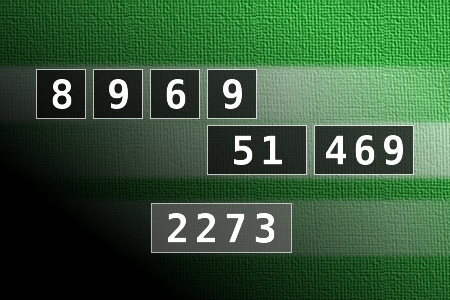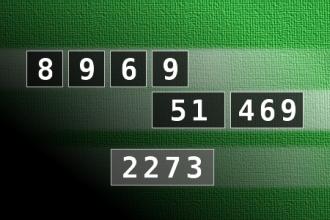Calculate the number 2273
NUMBERMANIA: Calculate the number 2273 using numbers [8, 9, 6, 9, 51, 469] and basic arithmetic operations (+, -, *, /). Each of the numbers can be used only once.Correct answers: 23
The first user who solved this task is Djordje Timotijevic.
#brainteasers #math #numbermania


